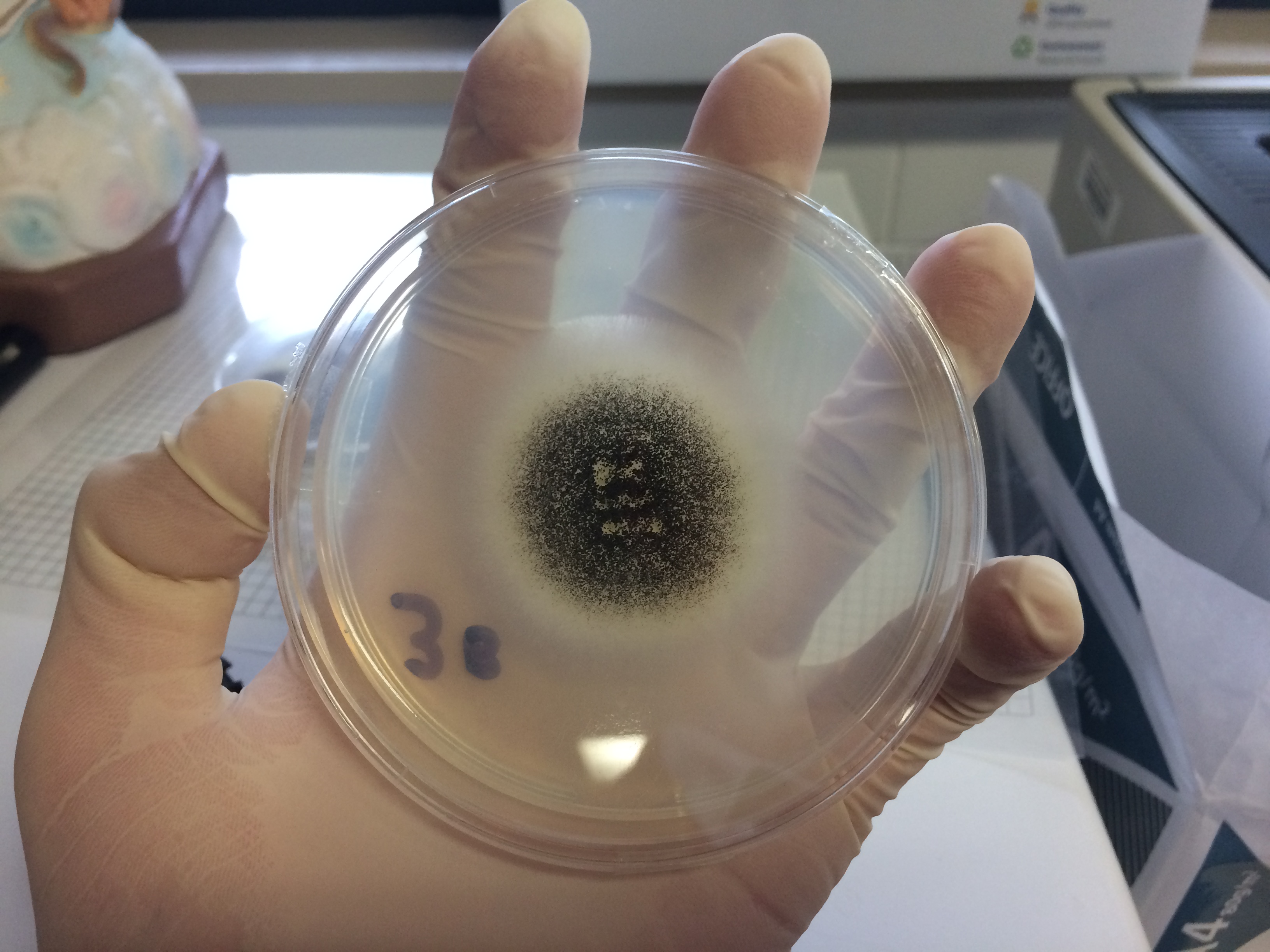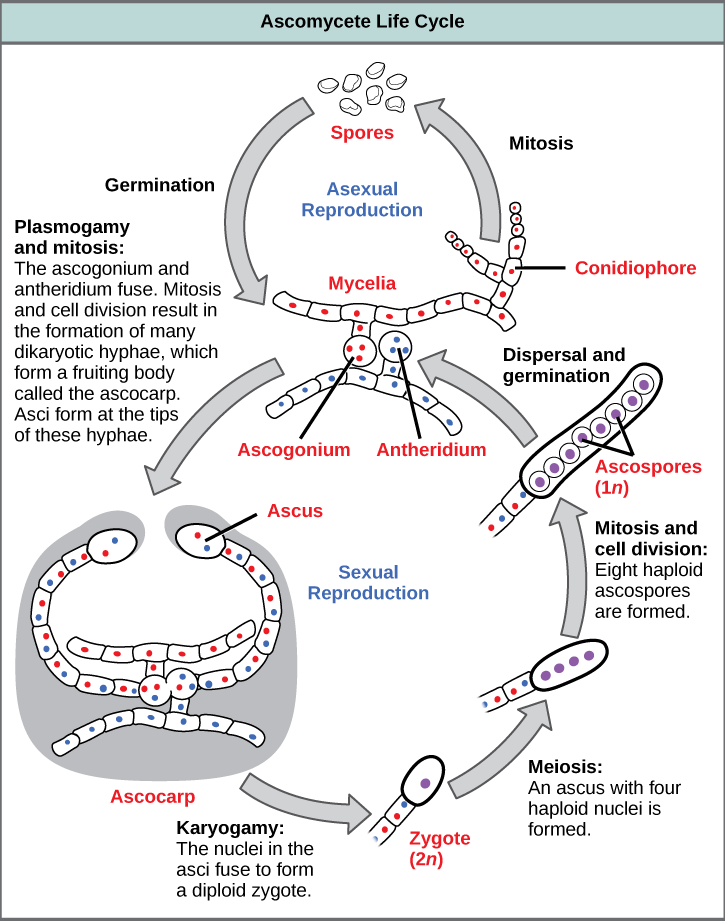|
BY1
''BY1'' is a taxonomically unidentified basidiomycete fungus. ITS sequencing has placed it in the Russulales and is referred to as a stereaceous basidiomycete. Chemotaxonomically supporting its placement in this group, it produces fomannoxins and vibralactones. The fungus' Mycelium, mycelia were isolated from dead aspen in Minnesota, USA. It is presumed to decompose wood by white rot. The mycelium can be grown on YMG agar at room temperature (4 g/L d-glucose, 4 g/L yeast extract, 10 g/L malt extract, 18 g/L agar). The culture can be obtained at the Jena Microbial Resource Collection registration number SF:011241. When the mycelia is wounded by scalpel damage, a yellow pigment appears. These pigments were identified as polyenes by characteristic UV-Vis spectra. The structures of the polyenes were determined by NMR. They were identified as 1) (3Z,5E,7E,9E,11E,13Z,15E,17E)-18-methyl-19-oxoicosa-3,5,7,9,11,13,15,17-octaenoic acid; and 2) (3E,5Z,7E,9E,11E,13E,15Z,17E,19E)-20-methyl-2 ... [...More Info...] [...Related Items...] OR: [Wikipedia] [Google] [Baidu] |
Stereaceous
The Stereaceae are a family (biology), family of corticioid fungi in the Russulales order. Species in the family have a widespread distribution, are lignicolous or terrestrial (in leaf litter), and typically saprobic. According to the ''Dictionary of the Fungi'', the family contains 22 genera and 125 species. Genera list *''Acanthobasidium'' *''Acanthofungus'' *''Acanthophysium'' *''Aleurocystis'' *''Aleurodiscus'' *''Amylofungus'' *''Amylohyphus'' *''Amylosporomyces'' *''Amylostereum'' *''Boidinia'' *''Chaetoderma (fungus), Chaetoderma'' *''Conferticium'' *''Gloeocystidiopsis'' *''Gloeodontia'' *''Gloeomyces'' *''Megalocystidium'' *''Pseudoxenasma'' *''Scotoderma'' *''Scytinostromella'' *''Stereum'' *''Xylobolus'' There is also phylogenetic evidence that the species known as BY1 is in Stereaceae, but has yet to be described completely. References External links Stereaceae at Hidden Forest Stereaceae, Russulales Basidiomycota families {{Russulales-stub ... [...More Info...] [...Related Items...] OR: [Wikipedia] [Google] [Baidu] |
Basidiomycete
Basidiomycota () is one of two large divisions that, together with the Ascomycota, constitute the subkingdom Dikarya (often referred to as the "higher fungi") within the kingdom Fungi. Members are known as basidiomycetes. More specifically, Basidiomycota includes these groups: mushrooms, puffballs, stinkhorns, bracket fungi, other polypores, jelly fungi, boletes, chanterelles, earth stars, smuts, bunts, rusts, mirror yeasts, and '' Cryptococcus'', the human pathogenic yeast. Basidiomycota are filamentous fungi composed of hyphae (except for basidiomycota-yeast) and reproduce sexually via the formation of specialized club-shaped end cells called basidia that normally bear external meiospores (usually four). These specialized spores are called basidiospores. However, some Basidiomycota are obligate asexual reproducers. Basidiomycota that reproduce asexually (discussed below) can typically be recognized as members of this division by gross similarity to others, by the for ... [...More Info...] [...Related Items...] OR: [Wikipedia] [Google] [Baidu] |
Polyketidic
Polyketides are a class of natural products derived from a precursor molecule consisting of a chain of alternating ketone (or reduced forms of a ketone) and methylene groups: (-CO-CH2-). First studied in the early 20th century, discovery, biosynthesis, and application of polyketides has evolved. It is a large and diverse group of secondary metabolites caused by its complex biosynthesis which resembles that of fatty acid synthesis. Because of this diversity, polyketides can have various medicinal, agricultural, and industrial applications. Many polyketides are medicinal or exhibit acute toxicity. Biotechnology has enabled discovery of more naturally-occurring polyketides and evolution of new polyketides with novel or improved bioactivity. History Naturally produced polyketides by various plants and organisms have been used by humans since before studies on them began in the 19th and 20th century. In 1893, J. Norman Collie synthesized detectable amounts of orcinol by heating ... [...More Info...] [...Related Items...] OR: [Wikipedia] [Google] [Baidu] |
Prenyltransferase
Prenyltransferases (PTs) are a class of enzymes that transfer allylic prenyl groups to acceptor molecules. Prenyl transferases commonly refer to isoprenyl diphosphate syntheses (IPPSs). Prenyltransferases are a functional category and include several enzyme groups that are evolutionarily independent. Prenyltransferases are commonly divided into two classes, cis (or Z) and trans (or E), depending upon the stereochemistry of the resulting products. Examples of trans-prenyltranferases include dimethylallyltranstransferase, and geranylgeranyl pyrophosphate synthase. Cis-prenyltransferases include dehydrodolichol diphosphate synthase (involved in the production of a precursor to dolichol). Trans- and cis-prenyltransferases are evolutionarily unrelated to each other and there is no sequential and structural similarity. The beta subunit of the farnesyltransferases is responsible for peptide binding. Squalene-hopene cyclase is a bacterial enzyme that catalyzes the cyclization of squalene ... [...More Info...] [...Related Items...] OR: [Wikipedia] [Google] [Baidu] |
Aspergillus Niger
''Aspergillus niger'' is a mold classified within the ''Nigri'' section of the ''Aspergillus'' genus. The ''Aspergillus'' genus consists of common molds found throughout the environment within soil and water, on vegetation, in fecal matter, on decomposing matter, and suspended in the air. Species within this genus often grow quickly and can sporulate within a few days of germination. A combination of characteristics unique to ''A. niger'' makes the microbe invaluable to the production of many acids, proteins and bioactive compounds. Characteristics including extensive metabolic diversity, high production yield, secretion capability, and the ability to conduct post-translational modifications are responsible for ''A. niger's'' robust production of secondary metabolites. ''A. niger's'' capability to withstand extremely acidic conditions makes it especially important to the industrial production of citric acid. ''A. niger'' causes a disease known as "black mold" on certain fruits an ... [...More Info...] [...Related Items...] OR: [Wikipedia] [Google] [Baidu] |
Antifungal
An antifungal medication, also known as an antimycotic medication, is a pharmaceutical fungicide or fungistatic used to treat and prevent mycosis such as athlete's foot, ringworm, candidiasis (thrush), serious systemic infections such as cryptococcal meningitis, and others. Such drugs are usually yes obtained by a doctor's prescription, but a few are available over the counter (OTC). Types of antifungal There are two types of antifungals: local and systemic. Local antifungals are usually administered topically or vaginally, depending on the condition being treated. Systemic antifungals are administered orally or intravenously. Of the clinically employed azole antifungals, only a handful are used systemically. These include ketoconazole, itraconazole, fluconazole, fosfluconazole, voriconazole, posaconazole, and isavuconazole. Examples of non-azole systemic antifungals include griseofulvin and terbinafine. Classes Polyenes A polyene is a molecule with multiple con ... [...More Info...] [...Related Items...] OR: [Wikipedia] [Google] [Baidu] |
Phytotoxic
Phytotoxins are substances that are poisonous or toxic to the growth of plants. Phytotoxic substances may result from human activity, as with herbicides, or they may be produced by plants, by microorganisms, or by naturally occurring chemical reactions. The term is also used to describe toxic chemicals produced by plants themselves, which function as defensive agents against their predators. Most examples pertaining to this definition of phytotoxin are members of various classes of specialised or secondary metabolites, including alkaloids, terpenes, and especially phenolics, though not all such compounds are toxic or serve defensive purposes. Phytotoxins may also be toxic to humans. Toxins produced by plants Alkaloids Alkaloids are derived from amino acids, and contain nitrogen. They are medically important by interfering with components of the nervous system affecting membrane transport, protein synthesis, and enzyme activities. They generally have a bitter taste. Alkaloids ... [...More Info...] [...Related Items...] OR: [Wikipedia] [Google] [Baidu] |
Ascomycete
Ascomycota is a phylum of the kingdom Fungi that, together with the Basidiomycota, forms the subkingdom Dikarya. Its members are commonly known as the sac fungi or ascomycetes. It is the largest phylum of Fungi, with over 64,000 species. The defining feature of this fungal group is the "ascus" (), a microscopic sexual structure in which nonmotile spores, called ascospores, are formed. However, some species of the Ascomycota are asexual, meaning that they do not have a sexual cycle and thus do not form asci or ascospores. Familiar examples of sac fungi include morels, truffles, yeast#Beer, brewers' and bakers' yeast, Xylaria, dead man's fingers, and Pezizaceae, cup fungi. The fungal symbiosis, symbionts in the majority of lichens (loosely termed "ascolichens") such as ''Cladonia'' belong to the Ascomycota. Ascomycota is a monophyly, monophyletic group (it contains all descendants of one common ancestor). Previously placed in the Deuteromycota along with asexual species from o ... [...More Info...] [...Related Items...] OR: [Wikipedia] [Google] [Baidu] |
Clade
A clade (), also known as a monophyletic group or natural group, is a group of organisms that are monophyletic – that is, composed of a common ancestor and all its lineal descendants – on a phylogenetic tree. Rather than the English term, the equivalent Latin term ''cladus'' (plural ''cladi'') is often used in taxonomical literature. The common ancestor may be an individual, a population, or a species (extinct or extant). Clades are nested, one in another, as each branch in turn splits into smaller branches. These splits reflect evolutionary history as populations diverged and evolved independently. Clades are termed monophyletic (Greek: "one clan") groups. Over the last few decades, the cladistic approach has revolutionized biological classification and revealed surprising evolutionary relationships among organisms. Increasingly, taxonomists try to avoid naming taxa that are not clades; that is, taxa that are not monophyletic. Some of the relationships between org ... [...More Info...] [...Related Items...] OR: [Wikipedia] [Google] [Baidu] |
Polyketide Synthase
Polyketides are a class of natural products derived from a precursor molecule consisting of a chain of alternating ketone (or reduced forms of a ketone) and methylene groups: (-CO-CH2-). First studied in the early 20th century, discovery, biosynthesis, and application of polyketides has evolved. It is a large and diverse group of secondary metabolites caused by its complex biosynthesis which resembles that of fatty acid synthesis. Because of this diversity, polyketides can have various medicinal, agricultural, and industrial applications. Many polyketides are medicinal or exhibit acute toxicity. Biotechnology has enabled discovery of more naturally-occurring polyketides and evolution of new polyketides with novel or improved bioactivity. History Naturally produced polyketides by various plants and organisms have been used by humans since before studies on them began in the 19th and 20th century. In 1893, J. Norman Collie synthesized detectable amounts of orcinol by heating de ... [...More Info...] [...Related Items...] OR: [Wikipedia] [Google] [Baidu] |


